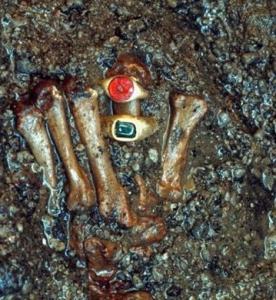I googled “what famous archaeological discoveries are in the country Sri Lanka” ( the country where my parents are from). What frequently popped up was this magnificent fortress called the Sigiriya. What’s fascinating about this fortress is that it is sitting right on top of a six hundred foot rock! This article will assess the story behind the story and discovery of Sigiriya with an archaeological spin to it.
Let’s rewind the clock back hundreds of years to about the fifth century AD. Meanwhile , Sri Lanka was a monarchist country; specifically, the kingdom was in the Moriya dynasty. The dynasty was in the midst of a heated turmoil as two half-brothers (Kashyapa and Moggallana) competed for the throne (Dowson 2017). Kashyapa’s mother was a concubine for the king while the mother of Moggallana was the queen; thus, Moggallana was the rightful heir to the throne. However, Kashyapa seized the crown from his father in a coup with the help of the military. Fearing for his life, Moggallana fled to South India. At the same time, Kashyapa dreaded that his half-brother might return with vengeance one day. So, he moved the capital from Anuradhapura to Sigiriya in 477 CE (Dowson 2017). In order to make his palace more secure, he constructed it on the top of a colossal rock. As the years went by and no sign of Moggallana, Kashyapa turned his fortress into a lavish palace. However, Kashyapa’s omen will become a reality in 495 CE as Moggallana returned (Dowson 2017). With his allies betraying him, Kashyapa committed suicide while Moggallana became king. Sigiriya was abandoned shortly after and was forgotten.
It was not until the 1800s in which archaeologists recovered the lost site and fortress. Archaeologists excavated the site in order to reconstruct the importance of Sigiriya (Dawson). Surrounding the fortress, are lavish gardens decorated with limestone and encompass pools of water like in Figure 1. Archaeologists assess that these gardens were constructed during the period when Kashyapa turned the fortress into a palace. One garden however was dated to the twelfth century which archaeologists raised the question if Sigiriya was ever abandoned at all (Dawson). A separate investigation found a huge stone paw, pictured in Figure 2, at the entrance of the rock. Archaeologists assessed that these are lion paws since Sigiriya, translated in Sinhalese, means “lion rock.” A third excavation found beautiful frescoes depicting the culture during Kashyapa’s reign. In Figure 3, this massive painting of a Buddhist woman was found on the side of the rock.

Figure 1: Bird’s-eye View of one of the gardens surrounding the rock fortress. Photo by Bernard Gagnon
Archaeology isn’t just about excavations. It’s about constructing the stories and meanings behind them through the knowledge of the site’s culture and history. We don’t know if Sigiriya was truly abandoned. It’s normal to not have answers to every question since archaeology is a process that’s not written in stone. However, we know that Sigiriya will be for years to come!
References
Dowson, Thomas
2017 The Ancient City of Sigiriya, Sri Lanka. Archaeology Travel. August 13
Take a look at these websites to start your journey!
- Sigiriya
Sigiriya 2019: Best of Sigiriya, Sri Lanka Tourism. TripAdvisor.
https://www.tripadvisor.com/Tourism-g304141-Sigiriya_Central_Province-Vacations.html





